3 Questions About Piggyback Contracting—and the Answers You’re Looking For

One takeaway from this summer’s piggyback controversy is how things we all thought were clear are suddenly questionable. Modular, prefabricated, portable, relocatable—what’s the difference? What’s piggybackable and what’s not? And why does it matter? We’ll tell you.
Recent communication by the Office of Public School Construction (OPSC) raised all kinds of questions about the legality of using piggyback contracts to acquire modular school buildings—a process that California school districts have used for decades to purchase new facilities.
Unfortunately, the net effect was to create ambiguity when what’s needed is clarity. Add the complexity of California codes and statutes—each with its own interpretation of what’s important—and a simple, everyday practice has become convoluted.
So we’re making it simple again, starting with the questions at the heart of it all. We’ll show you why different building types are treated differently and reaffirm why modular buildings like AMS and GEN7 buildings are—and always have been—piggybackable while some prefabricated buildings are not.
The 3 Things Everybody Wants to Know
Much of the confusion surrounds Attorney General (AG) Opinion 05-405—a 2006 legal opinion that draws a clear line between different types of modular and prefabricated buildings and why they can—or cannot—be purchased via piggyback contracts.
What’s the difference between modular and prefabricated?
Though the terms are used interchangeably, they’re two different things. Prefabricated is a broad category of factory-built buildings, while modular buildings are a specific building type. Modular construction uses a prefabrication process but not all prefabricated buildings are modular.
Prefabricated Buildings
Prefabricated, or “prefab,” is an umbrella term for a building that is fabricated—or manufactured—to some degree in a factory before transport to the jobsite for finishing. Prefab buildings are different from conventional buildings, which are constructed start-to-finish onsite.
Starting production in the factory doesn’t make all prefab buildings the same. Though buildings may be constructed from the same basic materials, it’s how and where these materials are assembled into a finished building that determines the type.
Modular Buildings
AMS buildings are modular buildings. Materials are assembled into fully functional modules on the factory floor and third-party inspected before transport on a special AMS trailer to the school site.
Modular buildings are three-dimensional, or volumetric. Walls, floor and roof form fully-enclosed, six-sided modules that have interior and exterior finishes in place. Modules are delivered 95% complete, then connected into a single- or multi-story building onsite. There is minimal finish work required; once the modules are secured, connected and hooked up to utilities, the building is ready for use.
Here’s how an AMS modular building comes together.
Watch Us Build
Modular Component Buildings
Modular component buildings use a different process. Prefabricated components are assembled in the factory but the actual building is constructed onsite.
Typical prefab components include:
- Roof trusses
- Wall panels
- Floor systems
- Windows
- Cabinets
- Countertops
Modular component buildings are not volumetric. One-dimensional components are shipped flat to the school site, where onsite contractors assemble them ground-up into a building. Because buildings are delivered only 5% complete, onsite work is extensive.
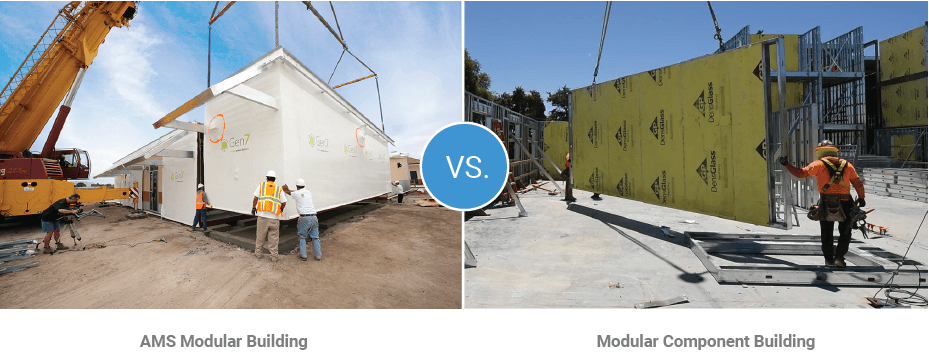
Why It Matters
Modular buildings can be purchased through piggyback contracts while modular component buildings cannot.
The 2006 AG Opinion makes it clear that using modular components—which AMS and GEN7 buildings do not use—is exclusory, restricting a school district’s ability to piggyback projects.
“A school district may not, without advertising for bids, contract with another public agency to acquire factory-built modular building components for installation on a permanent foundation.”
Modular buildings offer other advantages, saving schools time and money while making construction safer for students.
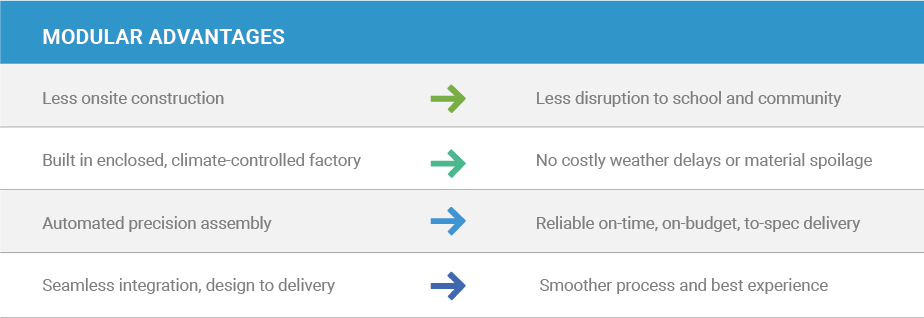
What makes a building “portable” or “relocatable”?
“Portable” and “relocatable” reference the same thing: a building’s ability to be moved fully intact from one location to another. Two factors play a key role in whether a building is “relocatable.”
Transportable over Public Streets
The California Education Code Section 17070.15 defines a portable classroom as “a classroom building of one or more stories that is designed and constructed to be relocatable and transportable over public streets, and with respect to a single story portable classroom, is designed and constructed for relocation without the separation of the roof or floor from the building.”
AMS and GEN7 modular buildings are transported fully-built with roof and floor integrally attached, making them, by code, “portable” structures.
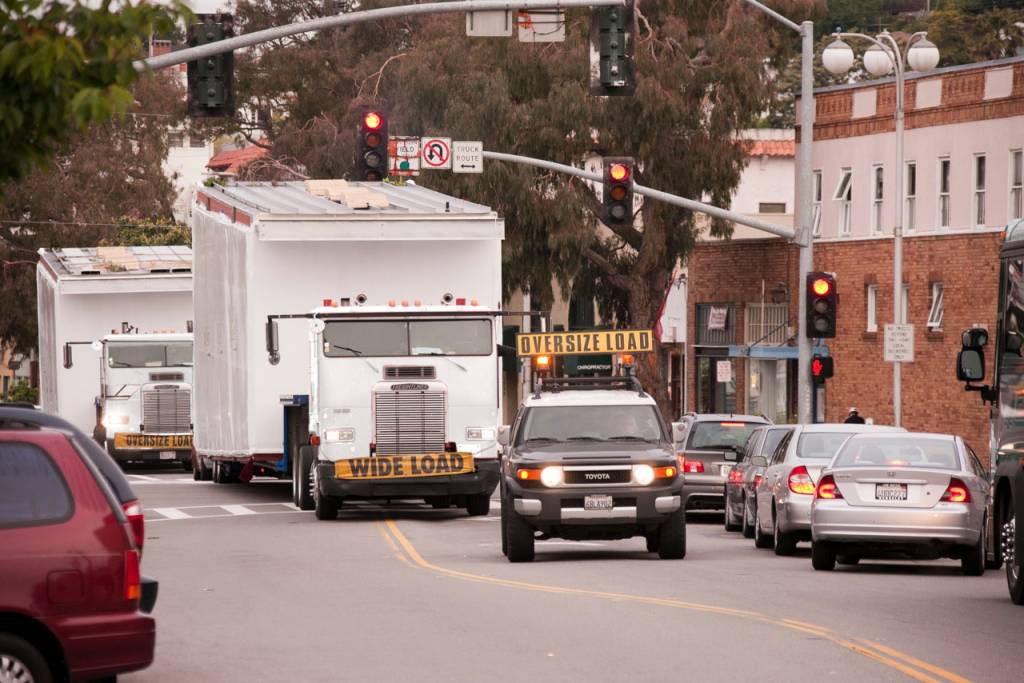
Relocatable by Design and Construction
Most modular buildings, including AMS buildings, are installed on a flexible wood or concrete stem wall foundation, allowing the entire building to be removed and relocated fully intact with minimal damage to the structure or site.
Concrete slab-on-grade foundations are considered permanent. Once prefab components are assembled directly on a slab, the finished building is difficult to remove and relocate without significant damage.
According to the AG, once “modular components have been attached at the building site, and after significant onsite finish work has been completed, they would result in permanent school buildings.”
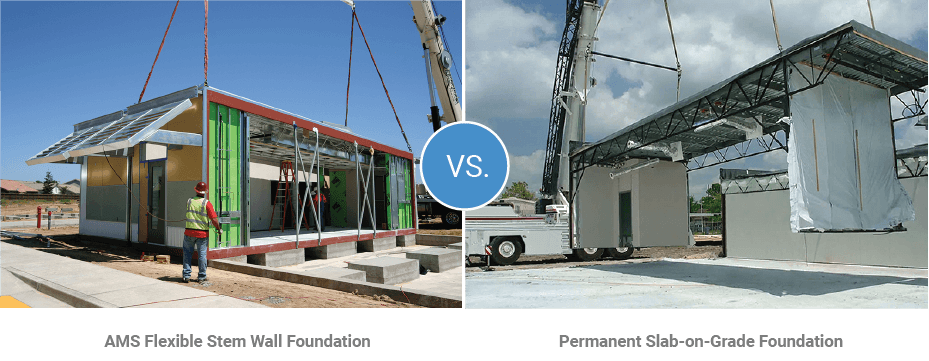
Why It Matters
Only portable, relocatable and temporary buildings can be piggybacked.
California Public Construction Code (PCC) Section 20118 permits school districts to buy personal property only—not real property—using piggyback contracts. California code, case law and the 2006 AG Opinion define personal property as “movable” and real property as “immovable.”
Modular buildings are movable, while modular component buildings are not.
Because AMS and GEN7 buildings can be removed from their foundation and relocated at any time during the building lifecycle, they do not transform from personal property to real property. The building remains personal property temporarily attached to the land and relocatable at the owner’s discretion.
Modular component buildings are classified as real property affixed permanently to a foundation—a category that cannot be purchased via piggyback contracts.
Are modular relocatable buildings “temporary”?
While some relocatable buildings are purchased for temporary or multi-site use, most remain in place for their entire lifecycle. Relocatable buildings don’t have to be relocated. The term describes how a building can be used, not how a specific owner may choose to use it.
Design Intent
Today’s modular relocatable buildings can be basic or sophisticated, but the intent is the same—to provide a building with a transportable feature that adds functionality. A building’s relocatability doesn’t affect its longevity or performance, which are determined by the quality of the construction and the durability of materials.
Not all modular buildings have the same quality but modular buildings set on concrete footings have a lifecycle comparable to site-built structures yet remain relocatable. The intent of AMS, as the seller, and school districts, as buyers, is to maximize a school’s investment by having the option to move any AMS building should it become necessary or desirable to do so.
AMS’ high performance buildings give school districts the ability to recoup their investment over the building’s 50+-year lifecycle while providing a design adaptability other building types cannot.
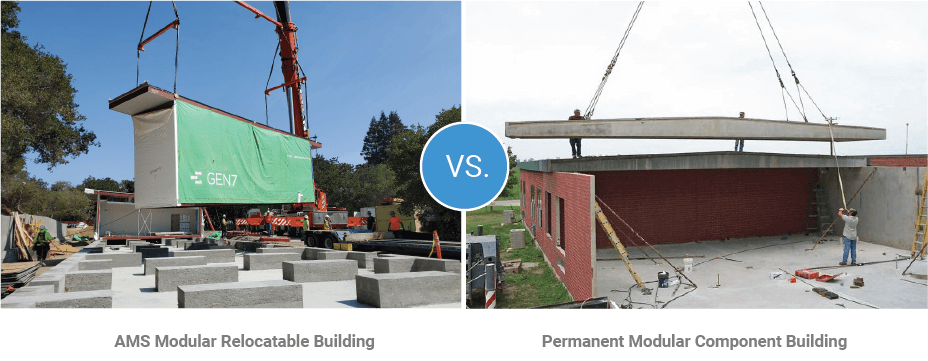
Why It Matters
School districts want options, and modular buildings provide them. The ability to relocate a building at any point during its lifecycle allows schools to meet changing needs, whether anticipated or unexpected.
We design AMS and GEN7 buildings to be as future-proof as possible, giving schools the flexibility to use any building to best advantage—where installed or in another location better suited to need.
Designing AMS buildings to be adaptable helps schools manage change, providing learning environments that put students in an optimal position to achieve and succeed.
What’s Piggybackable… and What’s Not?
This is the biggest question of all. The answer is simple.
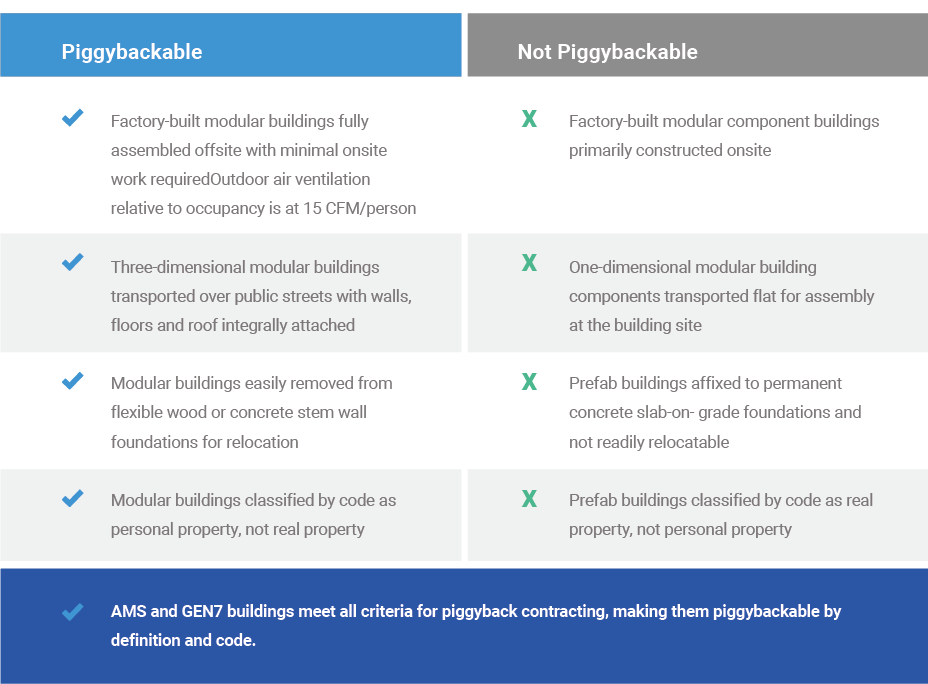
The Value of Piggyback Contracts
Lost in the confusion is what piggyback contracts allow school districts to do: update facilities on an accelerated schedule.
Modular school buildings give schools an affordable way to add capacity for new programming, design space for new learning methodologies and modernize old school buildings with safe, healthy buildings that improve student and teacher’s well-being and productivity.
Faster procurement is a shortcut to better schools. Better schools create better students. Better students today become better leaders tomorrow.
There’s a lot of value in that.
For the latest on piggyback contracts and other important issues affecting our schools and communities, follow us on Facebook and Twitter or subscribe to our AMS Newsletter.
More questions? We’ve got answers. Let’s Talk!
See how fast we install our buildings: GEN7: From Delivery to Done in 2:00.
Find out how The AMS Advantage benefits you.
Turn your vision into reality—for less than you think. Request a Quote.